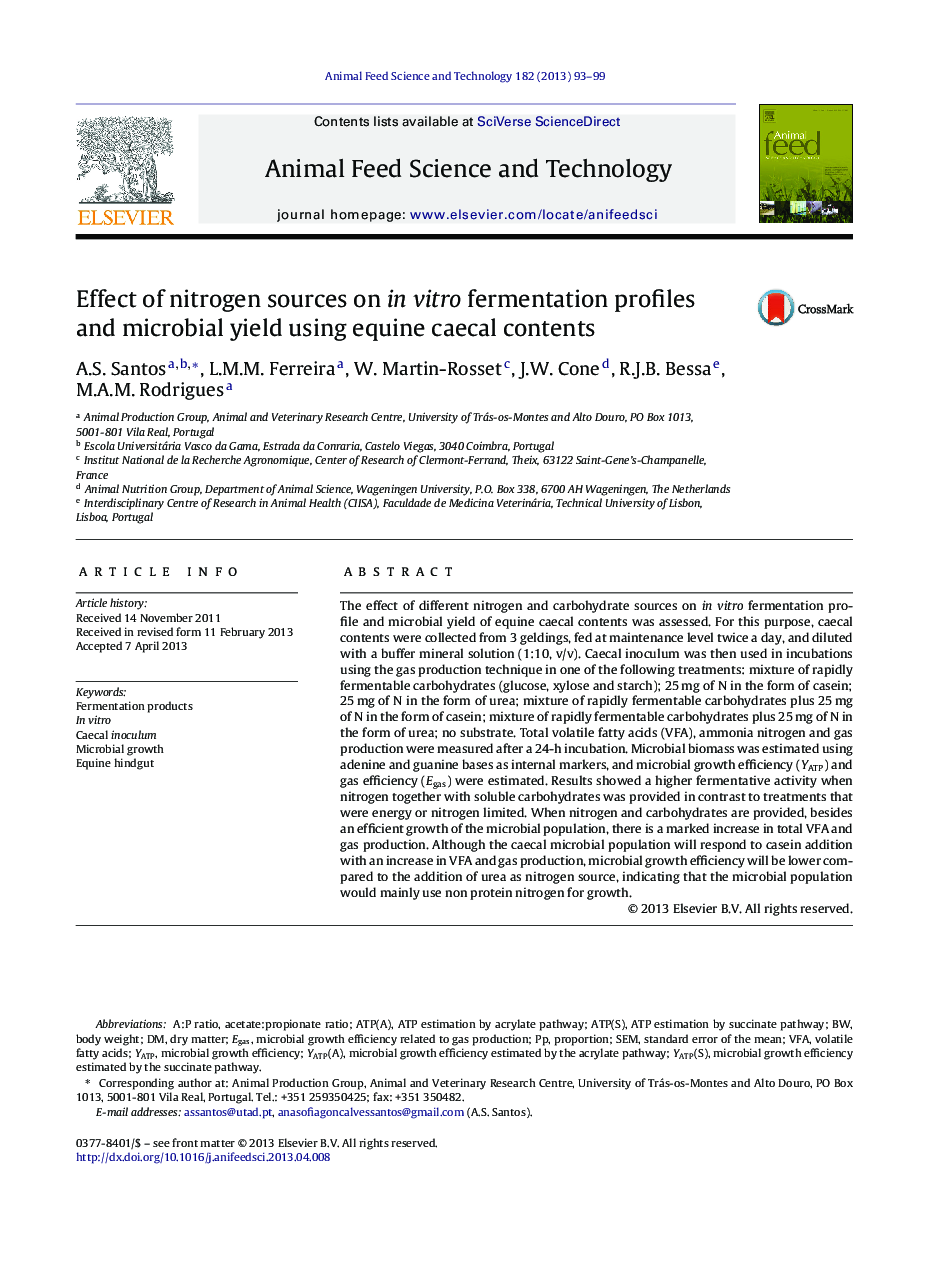| Article ID | Journal | Published Year | Pages | File Type |
|---|---|---|---|---|
| 8491914 | Animal Feed Science and Technology | 2013 | 7 Pages |
Abstract
The effect of different nitrogen and carbohydrate sources on in vitro fermentation profile and microbial yield of equine caecal contents was assessed. For this purpose, caecal contents were collected from 3 geldings, fed at maintenance level twice a day, and diluted with a buffer mineral solution (1:10, v/v). Caecal inoculum was then used in incubations using the gas production technique in one of the following treatments: mixture of rapidly fermentable carbohydrates (glucose, xylose and starch); 25Â mg of N in the form of casein; 25Â mg of N in the form of urea; mixture of rapidly fermentable carbohydrates plus 25Â mg of N in the form of casein; mixture of rapidly fermentable carbohydrates plus 25Â mg of N in the form of urea; no substrate. Total volatile fatty acids (VFA), ammonia nitrogen and gas production were measured after a 24-h incubation. Microbial biomass was estimated using adenine and guanine bases as internal markers, and microbial growth efficiency (YATP) and gas efficiency (Egas) were estimated. Results showed a higher fermentative activity when nitrogen together with soluble carbohydrates was provided in contrast to treatments that were energy or nitrogen limited. When nitrogen and carbohydrates are provided, besides an efficient growth of the microbial population, there is a marked increase in total VFA and gas production. Although the caecal microbial population will respond to casein addition with an increase in VFA and gas production, microbial growth efficiency will be lower compared to the addition of urea as nitrogen source, indicating that the microbial population would mainly use non protein nitrogen for growth.
Keywords
Related Topics
Life Sciences
Agricultural and Biological Sciences
Animal Science and Zoology
Authors
A.S. Santos, L.M.M. Ferreira, W. Martin-Rosset, J.W. Cone, R.J.B. Bessa, M.A.M. Rodrigues,
